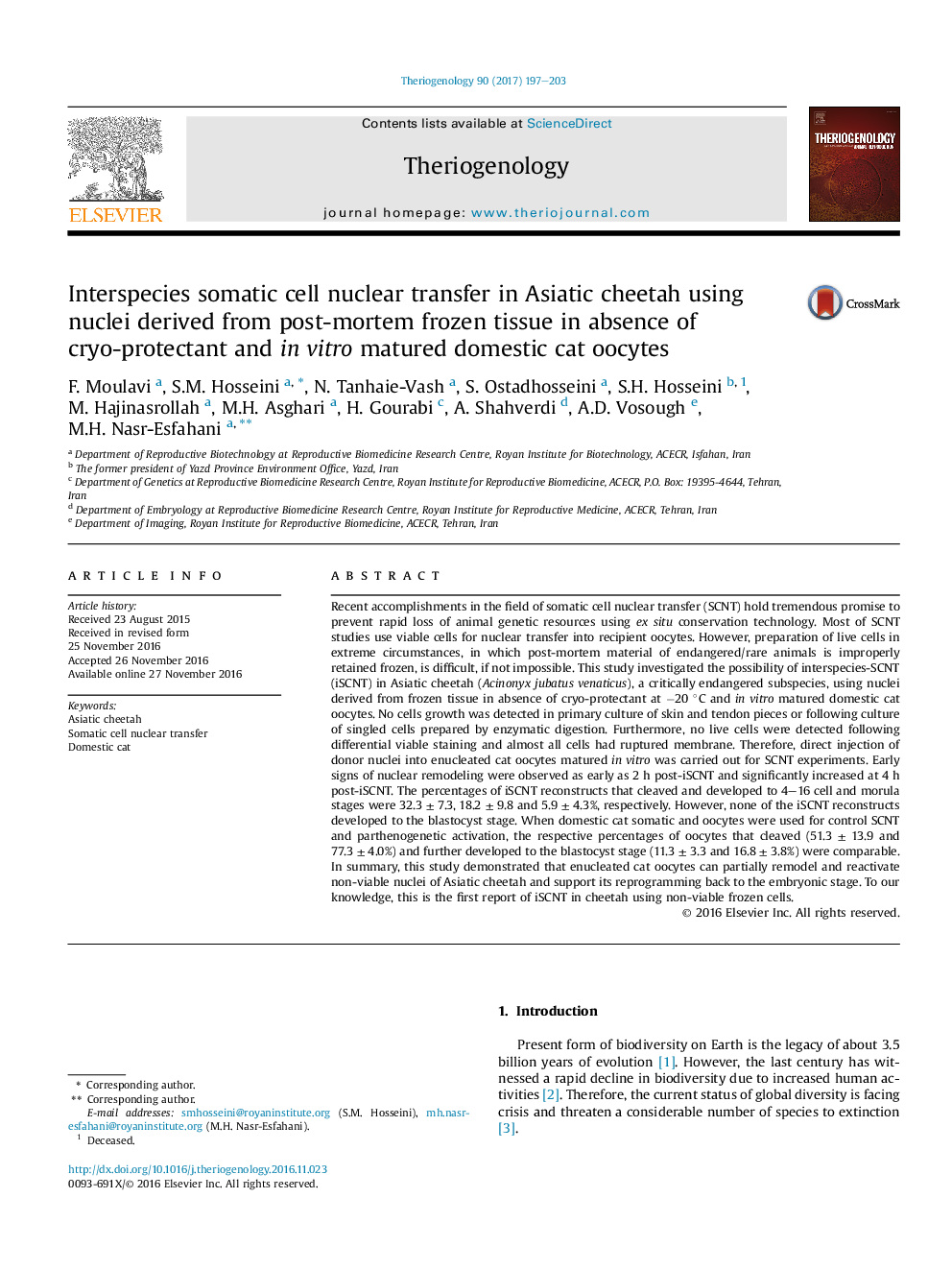| کد مقاله | کد نشریه | سال انتشار | مقاله انگلیسی | نسخه تمام متن |
|---|---|---|---|---|
| 5523136 | 1546079 | 2017 | 7 صفحه PDF | دانلود رایگان |
- Non-viable nuclei obtained from Asiatic cheetah kept at â20 °C post-mortem were used for iSCNT.
- Cheetah cloned embryos developed in vitro before arresting at the morula stage.
- Embryonic fragmentation and abnormal chromosome segregation were evidenced in Cheetah iSCNT embryos.
- Genomic disintegrity was reasoned as major cause of failed Cheetah iSCNT blastocyst development.
Recent accomplishments in the field of somatic cell nuclear transfer (SCNT) hold tremendous promise to prevent rapid loss of animal genetic resources using ex situ conservation technology. Most of SCNT studies use viable cells for nuclear transfer into recipient oocytes. However, preparation of live cells in extreme circumstances, in which post-mortem material of endangered/rare animals is improperly retained frozen, is difficult, if not impossible. This study investigated the possibility of interspecies-SCNT (iSCNT) in Asiatic cheetah (Acinonyx jubatus venaticus), a critically endangered subspecies, using nuclei derived from frozen tissue in absence of cryo-protectant at â20 °C and in vitro matured domestic cat oocytes. No cells growth was detected in primary culture of skin and tendon pieces or following culture of singled cells prepared by enzymatic digestion. Furthermore, no live cells were detected following differential viable staining and almost all cells had ruptured membrane. Therefore, direct injection of donor nuclei into enucleated cat oocytes matured in vitro was carried out for SCNT experiments. Early signs of nuclear remodeling were observed as early as 2 h post-iSCNT and significantly increased at 4 h post-iSCNT. The percentages of iSCNT reconstructs that cleaved and developed to 4-16 cell and morula stages were 32.3 ± 7.3, 18.2 ± 9.8 and 5.9 ± 4.3%, respectively. However, none of the iSCNT reconstructs developed to the blastocyst stage. When domestic cat somatic and oocytes were used for control SCNT and parthenogenetic activation, the respective percentages of oocytes that cleaved (51.3 ± 13.9 and 77.3 ± 4.0%) and further developed to the blastocyst stage (11.3 ± 3.3 and 16.8 ± 3.8%) were comparable. In summary, this study demonstrated that enucleated cat oocytes can partially remodel and reactivate non-viable nuclei of Asiatic cheetah and support its reprogramming back to the embryonic stage. To our knowledge, this is the first report of iSCNT in cheetah using non-viable frozen cells.
Journal: Theriogenology - Volume 90, 1 March 2017, Pages 197-203
